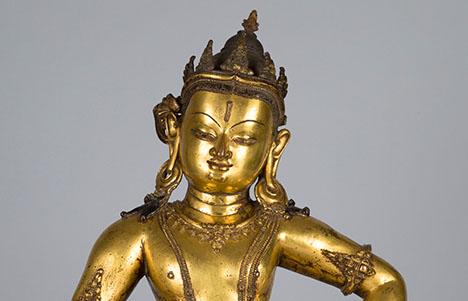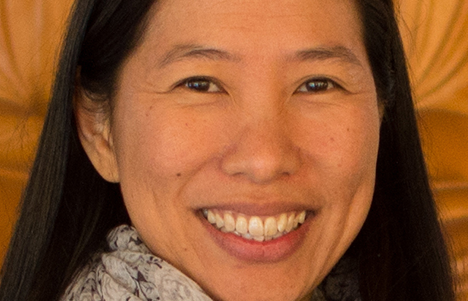
About the Meditation
Meditation session led by Rebecca Li
The guided meditation begins at 20:03.
For centuries Himalayan practitioners have used meditation to quiet the mind, open the heart, calm the nervous system, and increase focus. Now Western scientists, business leaders, and the secular world have embraced meditation as a vital tool for brain health.
Whether you’re a beginner, a dabbler, or a skilled meditator seeking the company of others, join expert teachers in a forty-five-minute weekly program designed to fit into your lunch break. Each session will be inspired by a different work of art from the Rubin Museum’s collection and will include an opening talk, and a twenty-minute sitting session.
This program is presented in partnership with Sharon Salzberg, the Interdependence Project and Parabola Magazine.


Related Artwork

Theme: Facing Chaos
Vajrasattva
Vajrasattva is both a highly accomplished bodhisattva and a primordial buddha who is often invoked to purify the errors made during rituals and other religious practices. His name means “vajra being,” and he is the personification of the vajra, the most important ritual implement and symbol of Esoteric Buddhism. The vajra is a symbol of power and indestructibility of the enlightened mind. This sculpture depicts the deity holding a bell at his waist, and he once held a vajra in front of his chest with his right hand.
This is an extremely elegant example of Nepalese sculpture. The figure’s well-proportioned body, with large head and strong limbs that bend as if he is dancing, perfectly combine a sense of movement and stability. The jewelry–multiple strings of pearls and narrow pointed jewel clusters around the arms and legs, which mirror the spires of the crown””further enhance the graceful appearance. The helmet-like hairstyle with the bud-shaped finial and the wide circular earrings with ornate bottom edges are characteristic of Nepalese sculpture. To create this artwork several pieces were cast separately and then welded together. The resulting joints were cleverly concealed within the figure’s ornaments, such as the armlets.
About the Speaker

Rebecca Li, a Dharma heir in the lineage of Chan Master Sheng Yen, is the founder and guiding teacher of Chan Dharma Community. She started practicing with Master Sheng Yen in the 1990s and served as his translator until his passing in 2009. She later trained with and received full Dharma transmission from one of his Dharma heirs, Dr. Simon Child, in 2016. Dr. Li teaches meditation and Dharma classes, gives public lectures, and leads retreats in North America and the UK. She is a sociology professor at The College of New Jersey, where she also serves as faculty director of the Alan Dawley Center for the Study of Social Justice. Her latest book is Allow Joy into Our Hearts: Chan Practice in Uncertain Times. Find her talks and writings at www.rebeccali.org.
